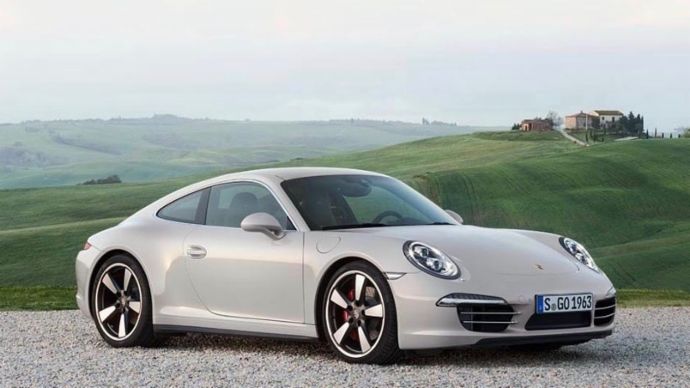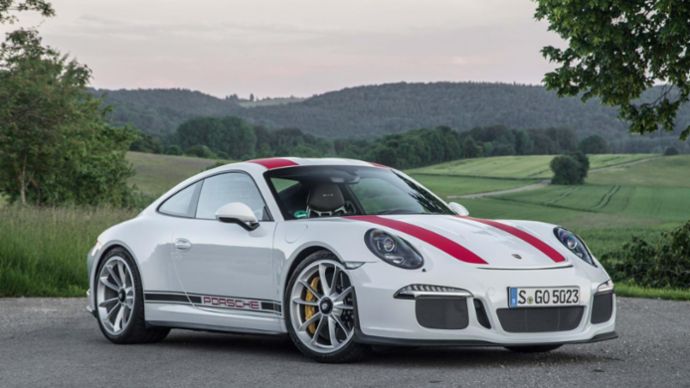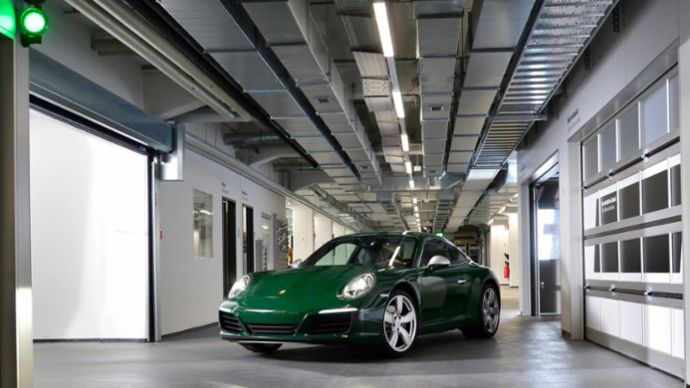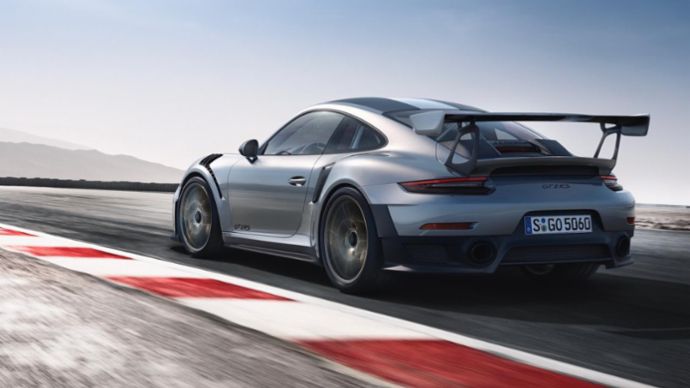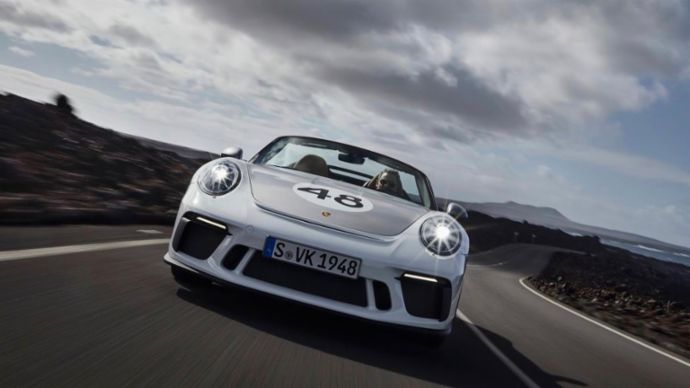This is a work-in progress, the result of my consolidating and organizing my many files on the history the automobile in America. It is not complete nor definitive, but it does provide solid basis that should help anyone working in the field. The Bibliography listing books only will be updated from time to time, and as I do so this post will be deleted. You can also find separate bibliography on journal articles on another blog post.
Books
Adler, Dennis. Chrysler.Osceola, WI: MBI, 2000.
------. Duesenberg. N.P: Krause Publications, 2004.
Allen, Frederick Lewis. Only Yesterday.New York: Harper and Row, 1931.
Antonick, Michael. California Screamin’: The Glory Days of Corvette Road Racing.Osceola, WI: MBI, 1990.
Arnold, Horace Lucien, and Fay Leone Faurote. Ford Methods and Ford Shops.New York: The Engineering Magazine Company, 1915.
Assael, Shaun.Wide Open: Days and Nights on the NASCAR Tour.New York: Ballantine Books, 1998.
Bailey, Beth L. From Front Porch to Back Seat: Courtship in Twentieth-Century America.Baltimore: Johns Hopkins University Press, 1988.
Baime, A.J. The Arsenal of Democracy: FDR, Detroit, and an Epic Quest to Arm an America at War.New York: Houghton Mifflin Harcourt, 2014.
Baldwin, Neil. Henry Ford and the Jews: The Mass Production of Hate.New York: Public Affairs, 2001.
Barnard, John. American Vanguard: The United Autoworkers during the Reuther Years, 1935-1970. Detroit: Wayne State University Press, 2004.
Barnes, H.E. Society in Transition.New York: Prentice Hall, 1939.
Batchelor, Dean. Dry Lakes and Drag Strips: The American Hot Rod.St. Paul, MN: MBI, 2002.
Batchelor, Ray. Henry Ford:Mass Production, Modernism and Design.Manchester: Manchester University Press, 1994.
Bayley, Stephen. Harley Earl and the Dream Machine. New York: Knopf, 1983.
------. Sex, Drink and Fast Cars.New York: Pantheon, 1986.
Beasley, David. The Suppression of the Automobile: Skullduggery at the Crossroads.New York and Westport, CT: Greenwood Press, 1988.
Beatley, Timothy. Green Urbanism: Learning from European Cities.Washington, D.C.: Island Press, 2000.
Belasco, Warren James. Americans on the Road: From Autocamp to Motel, 1910-1945.Baltimore: Johns Hopkins University Press, 1979.
Bel Geddes, Norman. Magic Motorways.New York: Random House, 1940.
Belloc, Hilaire. The Road.New York: Harper & Brothers, 1925.
Berger, Michael L. The Devil Wagon in God’s Country: The Automobile and Social Change in Rural America, 1893-1929.Hamden, CT: Archon Books, 1979.
Bernstein, Arnold. A History of The American Worker: The Turbulent Years 1933-1941. Los Angeles: University of California, 1969.
Billington, David P., and David P. Billington, Jr.Power, Speed, and Form: Engineers and the Making of the Twentieth Century. Princeton, NJ: Princeton University Press, 2006.
Binder, Alan K., and Deebe Ferris, eds. General Motors in the 20th Century. Southfield, MI: Wards Communications, 2000.
Blackford, Mansel G., and K. Austin Kerr. B. F. Goodrich: Tradition and Transformation, 1870-1995. Columbus: Ohio State University Press, 1996.
Blank, Harrod. Wild Wheels. San Francisco: Pomegranate Artbooks, 1993.
Blanke, David. Hell on Wheels: The Promise and Peril of America’s Car Culture, 1900-1940. Lawrence, KS: University of Kansas Press, 2007.
Bliss, Carey S. Autos Across America: A Bibliography of Transcontinental Automobile Travel: 1903-1940.Austin and New Haven: Jenkins & Reese, 1982.
Blum, John Morton. V Was For Victory: Politics and American Culture during World War II. New York: First Harvest, 1976.
Borg, Kevin L. Automechanics: Technology and Expertise in Twentieth-Century America. Baltimore: Johns Hopkins University Press, 2007.
Borgeson, Griffith. Miller. Osceola, WI: Motorbooks, 1993.
Bonsall, Thomas E. The Cadillac Story: The Postwar Years. Stanford, CA: Stanford University Press, 2004.
Bottles, Scott. Los Angeles and the Automobile: The Making of a Modern City. Berkeley and Los Angeles: University of California Press, 1987.
Boyer, Paul S. By Bomb’s Early Light: American Thought and Culture at the Dawn of the Atomic Age.New York: Pantheon, 1985.
Bradsher, Keith. High and Mighty: SUVs – the World’s most Dangerous Vehicles and How They Got that Way. New York: Public Affairs, 2002.
Braverman, Harry. Labor and Monopoly Capital: the Degradation of Work in the Twentieth Century.New York: Monthly Review Press, 1974.
Breer, Carl. The Birth of Chrysler Corporation and its Engineering Legacy.Warrendale, PA: Society of Automotive Engineers, 1995.
Brinkley, Douglas. Wheels for the World: Henry Ford, His Company, and a Century of Progress, 1903-2003.New York: Viking, 2003.
Brown, Kurt, ed. Drive, They Said: Poems about Americans and Their Cars.Minneapolis, MN: Milkweed, 1994.
Brown, Lester R., Christopher Flavin, and Colin Norman. Running on Empty: The Future of the Automobile in an Oil-Short World.New York: W. W. Norton, 1979.
Buehrig, Gordon M. Auburn. The Year 1936 is Viewed 50 Years Later. N.P.: n.p., 1986.
Buel, Ronald. Dead End: the Automobile in Mass Transportation. Englewood Cliffs, NJ: Prentice-Hall, 1972.
Burlingame, Roger. Henry Ford. New York: Knopf, 1955.
Burnside, Tom, and Denise McCluggage. American Racing: Road Racing in the 50s and 60s. Cologne: Kőnemann, 1996.
Burton, Walter. The Story of Tire Beads and Tires.New York: McGraw-Hill, 1954.
Butler, Don. Auburn Cord Duesenberg.Osceola, WI: Motorbooks, 1992.
Carson, Iain, and Vijay V. Vaitheeswaran. Zoom: The Global Race to Fuel the Car of the Future. New York: Twelve, 2007.
Casey, Robert. The Model T: A Centennial History.Baltimore: Johns Hopkins University Press, 2008.
Chandler, Alfred D. Strategy and Structure: Chapters in the History of Industrial Enterprise.Cambridge, MA: MIT Press, 1962.
Chrysler Corporation. The Story of an American Company.Detroit, MI: Chrysler, 1955.
Clarke, Sally H. Trust and Power: Consumers, the Modern Corporation, and the Making of the United States Automobile Market. Cambridge, UK: Cambridge University Press, 2007.
Clymer, Floyd. Floyd Clymer’s Steam Car Scrapbook.New York: Bonanza Books, 1945.
------. Henry’s Wonderful Model T 1908-1927.New York: McGraw-Hill, 1955.
------. Those Wonderful Old Automobiles.New York: Bonanza, 1953.
Cowan, Ruth Schwartz. More Work for Mother.New York: Basic Books, 1983.
Cray, Ed. Chrome Colossus: General Motors and Its Times.New York: McGraw-Hill, 1980.
Crews, Harry. Car.New York: William Morrow, 1972.
Critchlow, Donald T. Studebaker: The Life and Death of an American Corporation.Bloomington, IN: Indiana University Press, 1996.
Crosse, Jesse. The Greatest Movie Car Chases of all Time.St. Paul, MN: Motorbooks, 2006.
Csikszentmihalyi, Mihaly, and Eurgen Rochenberg-Halton. The Meaning of Things: Domestic Symbols and Self.Cambridge: Cambridge University Press, 1981.
Curico, Vincent. Chrysler: The Life and Times of an Automotive Genius.New York: Oxford University Press, 2000.
Cusumano, Michael A. The Japanese Automobile Industry: Technology and Management at Nissan andToyota.Cambridge, MA: Harvard University Press, 1985.
Dammann, George H. Seventy Years of Chrysler.Glen Ellyn, IL: Crestline, 1974.
Davis, Michael W. R. Detroit’s Wartime Industry, Arsenal of Democracy.Charleston, SC: Arcadia Publishing, 2007.
Davis, Mike. Buda’s Wagon: A Brief History of the Car Bomb.London: Verso, 2007.
Davis, Susan S. The Stanleys: Renaissance Yankees: Innovation in Industry and the Arts.New York: Newcomen Society of the United States, 1997.
Deming, W. Edwards. Out of the Crisis.Cambridge, MA: MIT Press, 1982.
Dettelbach, Cynthia Golob. In the Driver’s Seat: The Automobile in American Literature and Popular Culture.Westport, CT: Greenwood Press, 1976.
Donaldson, Gary. Abundance and Anxiety: America, 1945-1960. Westport, CT: Praeger, 1997.
Donnelly, Nora, ed. Customized: Art Inspired by Hot Rods, Low Riders and American Car Culture.New York: Harry N. Abrams, 2000.
Downey, Fairfax. Jezebel the Jeep.New York: Dodd, Mead and Company, 1944.
Duncan, Dayton. Horatio’s Drive: America’s First Road Trip.New York: Knopf, 2003.
Dunne, Michael J. American Wheels Chinese Roads: The Story of General Motors in China. Singapore: John Wiley & Sons, 2011.
Duryea, J. Frank. America’s First Automobile.Springfield, MA: Macaulay, 1942.
Eastman, Joel W. Styling vs. Safety: The American Automobile Industry and the Development of Automotive Safety, 1900–1966.Lanham, MD: University Press of America, 1984.
Ebert, Robert R. Champion of the Lark: Harold Churchhill and the Presidency of Studebaker Packard, 1956-1961.Jefferson, N.C.: McFarland, 2013.
____________. Studebaker and Byers A. Burlingame: End of an Automotive Legacy. Berea, OH: Cicero Books, 2016.
Elbert, J. L. Duesenberg: the Mightiest American Motor Car.Arcadia, CA: Post-Era Books, 1975.
Farber, David R. Sloan Rules: Alfred P. Sloan and the Triumph of General Motors.Chicago: University of Chicago Press, 2002.
Faris, John T. Roaming American Highways.New York: Farrar & Rinehart, 1931.
Felsen, Henry Gregor. Hot Rod.New York: E. P. Dutton, 1950.
Finkelstein, Norman H. The Way Things Never Were: The Truth About the “Good Old Days.”New York: Atheneum, 1999.
Flink, James J. America Adopts the Automobile, 1895-1910. Cambridge, MA: MIT Press, 1970.
------. The Automobile Age.Cambridge, MA: MIT Press, 1988.
Ford, Henry. My Life and Work. Garden City, NY: Doubleday, Page & Company, 1922.
------. Today and Tomorrow.Cambridge, MA: Productivity Press, 1988.
Foster, Kit. The Stanley Steamer: America’s Legendary Steam Car.Kingfield, ME: Stanley Museum, 2004.
French, Michael J. The United States Tire Industry. Boston: Twayne, 1991.
Frey, John W. ed. A History of the Petroleum Administration for War, 1941-1945. Washington D.C.: G.P.O., 1946.
Gartman, David. Auto Opium: A Social History of American AutomobileDesign.London: Routledge, 1994.
------. Auto Slavery: The Labor Process in the American Automobile Industry, 1897-1950.New Brunswick, NJ: Rutgers University Press, 1986.
Georgano, Nick. Art of the American Automobile: The Greatest Stylists and Their Work.New York: Smithmark, 1995.
Gladding, Effie Price. Across the Continent by the Lincoln Highway.New York: Brentano’s, 1915.
Goddard, Stephen B. Colonel Albert Pope and His American Dream Machines: The Life and Times of a Bicycle Tycoon Turned Automotive Pioneer.Jefferson, NC: McFarland, 2000.
Granatelli, Anthony (Andy). They Call Me Mister 500.Chicago: Henry Regency, 1969.
Grandin, Greg. Fordlandia: The Rise and Fall of Henry Ford’s Forgotten Jungle City.New York: Picador, 2010.
Greenleaf, William. Monopoly on Wheels: Henry Ford and the Selden Patent Suit.Detroit: Wayne State University Press, 1961.
Gruskin, Paul. Rock’n Down the Highway: The Cars that Made Rock Roll.St. Paul, MN: Voyageur Press, 2006.
Gustin, Lawrence R. Billy Durant: Creator of General Motors.Grand Rapids, MI: Eerdmans, 1973.
Gutfreud, Owen D. Twentieth-Century Sprawl: Highways and the Reshaping of the American Landscape.New York: Oxford University Press, 2004.
Hagstrom, Robert G. The NASCAR Way: The Business that Drives the Sport. New York: John Wiley, 1998.
Hair, William Ivy. The Kingfish and his Realm.Baton Rouge: Louisiana State University Press, 1991.
Halberstam, David. The Reckoning.New York: William Morrow, 1986.
Hamper, Ben. Rivethead: Tales from the Assembly Line.New York: Warner Books, 1992.
Heat Moon, William Least. Blue Highways: A Journey into America.Boston: Little, Brown, 1982.
Heitmann, John A. and Rebecca Morales. Stealing Cars: Technology and Society from the Model T to Gran Torino. Baltimore: Johns Hopkins University Press, 2014.
Hendry, Maurice D. Cadillac, Standard of the World: The Complete History.Princeton, NJ: Automobile Quarterly Publications, 1977.
Herlihy, David V. Bicycle: The History. New Haven, CT: Yale University Press, 2004.
Hermanson, Dave. The Mobilgas Economy Run: A History of the Long Distance Fuel Efficiency Competition, 1936-1968.Jefferson, NC: McFarland, 2014.
Hokanson, Drake. The Lincoln Highway: Main Street Across America. Iowa City: University of Iowa Press, 1988.
Hounshell, David A. From The American System to Mass Production 1800-1932: The Development of Manufacturing Technology in the United States.Baltimore: Johns Hopkins, 1984.
Hyde, Charles K. Arsenal of Democracy: The American Automobile Industry in World War II. Detroit: Wayne State University Press, 2013.
------. The Dodge Brothers: The Men, the Motor Cars, and the Legacy. Detroit: Wayne State University Press, 2005.
------.. Riding the Roller Coaster: A History of the Chrysler Corporation.Detroit: Wayne State University Press, 2003.
Iacocca, Lee, with William Novak. Iacocca: An Autobiography. New York: Bantam Books, 1984.
Ikuta, Yasutoshi. American Automobile: Advertising from the Antique and Classic Eras. San Francisco: Chronicle Books, 1988.
_____________. Cruise-o-matic: Automobile Advertising of the 1950s.San Francisco: Chronicle Books, 1988.
Ingrassia, Paul. Comeback: The Fall and Rise of the American Automobile Industry. New York: Simon & Schuster, 1995.
------.Engines of Change: A History of the American Dream in Fifteen Cars. New York: Simon & Schuster, 2012.
Innes, C. D. Designing Modern America: Broadway to Main Street. New Haven: Yale University Press, 2005.
Jackson, Robert B. Road Race Round the World: New York to Paris, 1908. New York: Scholastic, 1965.
Jacobs, Timothy. A History of General Motors.New York: Smithmark, 1992.
_____________. Lemons: The Worlds Worst Cars.Greenwich, CT: Dorsey, 1991.
James, Wanda. Driving From Japan: Japanese Cars in America. Jefferson, NC: McFarland, 2005.
Jardim, Anne. The First Henry Ford: A Study in Personality and Leadership. Cambridge, MA: MIT Press, 1970.
Jeffreys, Steven. Management and the Managed. London: Cambridge Press, 1986.
Jerome, John. The Death of the Automobile: The Fatal Effect of the Golden Era, 1955-1970. New York: Norton, 1972.
Johnson, Ann. Hitting the Brakes: Engineering Design and the Production of Knowledge. Durham, NC: Duke University Press, 2009.
Kanigel, Robert. The One Best Way: Frederick Winslow Taylor and the Enigma of Efficiency. New York: Viking, 1997.
Kaszynski, William. Route 66: Images of America’s Main Street. Jefferson, NC: McFarland, 2003.
Keats, John. The Insolent Chariots. Greenwich, CT: Fawcett, 1959.
Keene, Carolyn. The Secret of the Old Clock.New York: Grosset & Dunlap, 1930.
Kerouac, Jack. On the Road.New York: Viking, 2007.
Keyser, Michael. French Kiss With Death: Steve McQueen and the Making of Lemans: The man—the Race—the Cars—the Movie. Cambridge, MA: Robert Bentley, 1999.
Kinsey, Alfred, et al. Sexual Behavior in the Human Female.Philadelphia: W.B. Saunders Company, 1953.
Kirby, Richard Shelton. Engineering in History.New York: McGraw-Hill, 1956.
Kirsch, David. The Electric Vehicle and the Burden of History.New Brunswick, NJ: Rutgers University Press, 2000.
Klier, Thomas and James Rubenstein.Who Really Made Your Car? Restructuring and Geographic Change in the Auto Industry. Kalamazoo, MI: W.E. Upjohn Institute, 2008.
Koistinen, Paul A. C. Arsenal of World War II: The Political Economy of American Warfare, 1940-1945.Lawrence, KS: University Press of Kansas, 1994.
Kraus, Henry. Heroes of Unwritten Story: The UAW 1934-1939. Urbana and Chicago: University of Illinois Press, 1993.
Laban, Brian. Cars: The Early Years. Köln: Könemann, 2000.
Lacey, Robert. Ford, the Men and the Machine.New York: Little, Brown, 1986.
Lackey, James H. The Jordan Automobile: A History. Jefferson, NC: McFarland, 2005.
Ladd, Brian. Autophobia: Love and Hate in the Automobile Age. Chicago: University of Chicago Press, 2008.
Landis, Carole. Four Jills in a Jeep. New York: Random House, 1944.
Lane, Rose Wilder. Travels with Zenobia: Paris to Albania by Model T Ford. Columbia, MO: University of Missouri Press, 1983.
Langworth, Richard M., and Jan P. Norbye. The Complete History of Chrysler Corporation, 1924-1985.New York: Beekman House, 1985.
------.., and ------.. The Complete History of General Motors, 1908‑1986.Skokie, IL: Publications International, 1986.
Laux, James. In First Gear: The French Automobile Industry.Montreal: McGill-Queen’s University Press, 1976.
Lavine, Sigmund A. Kettering: Master Inventor.New York: Dodd, Mead & Company, 1960.
Lears, T. J. Jackson. Fables of Abundance: A Cultural History of Advertising in America. New York: Basic Books, 1994.
Leavitt, Helen. Superhighway—Superhoax.New York: Ballantine, 1970.
Le Grand, Henderson.Augustus Drives a Jeep.Indianapolis: The Bobbs-Merrill Company, 1946.
Lehto, Steve, and Jay Leno. Preston Tucker and his Battle to Build the Car of Tomorrow. Chicago: Chicago Review Press, 2016.
Leland, Ottilie M., with Minnie Dubbs Millbrook. Master of Precision: Henry M. Leland.Detroit: Wayne State University Press, 1996.
Leslie, Stewart W. Boss Kettering.New York: Columbia University Press, 1983.
Lesseig, Corey T. Automobility: Social Changes in the American South 1909-1939.New York and London: Routledge, 2001.
Levine, Leo. Ford: The Dust and the Glory: A Racing History. 2 vols. Warrendale, PA: SAE, 2001.
Levy, Lester S. Give Me Yesterday: American History in Song, 1890-1920.Norman, OK: University of Oklahoma Press, 1975.
Lewis, David Lanier. The Public Image of Henry Ford: An American Folk Hero and His Company.Detroit: Wayne State University Press, 1987.
Lewis, Tom. Divided Highways: Building the Interstate Highways, Transforming American Life.New York: Viking, 1997.
Lewis, W. David. Eddie Rickenbacker: An American Hero in the Twentieth Century.Baltimore: Johns Hopkins University Press, 2005.
Lincoln, Natalie Sumner. The Blue Car Mystery. New York: D. Appleton and Company, 1926.
Lincoln Highway Association. A Picture of Progress on the Lincoln Way.Detroit, 1920.
Livesay, Harold. American Made.Boston: Little, Brown and Company, 1977.
Lucsko, David N. The Business of Speed: The Hot Rod Industry in American, 1915-1990. Baltimore: Johns Hopkins University Press, 2008.
------. Junkyards, Gearheads, and Rust: Salvaging the Automotive Past. Baltimore: Johns Hopkins University Press, 2016.
Ludwigsen, Karl. Battle for the Beetle.Cambridge, MA: Bentley, 2000.
Lutz, Robert A. Guts: The Seven Laws of Business that Made Chrysler the World’s Hottest Car Company.New York: John Wiley, 1998.
Lynd, Robert S., and Helen Merrell Lynd. Middletown in Transition: A Study in Cultural Conflicts.New York: Harcourt, Brace, 1937.
Lyons, Dan. Cars of the Fantastic ‘50s.Iola, WI: KP Books, 2005.
Maugeri, Leonardo. The Age of Oil: The Mythology, History, and the Future of the World’s Most Controversial Resource. Westport, CT: Prager, 2006.
Madsen, Axel. The Deal Maker: How William C. Durant Made General Motors.New York: Wiley, 1999.
Mantle, Jonathan. Car Wars: Fifty Years of Greed, Treachery, and Skulduggery in the Global Marketplace. New York: Arcade, 1995.
March, Peter, and Peter Collett. Driving Passion: The Psychology of the Car. Boston and London: Faber and Faber, 1987.
Marling, Karal Ann. As Seen on TV: The Visual Culture of Everyday Life in the 1950s. Cambridge, MA: Harvard University Press, 1994.
Marquis, Samuel S. Henry Ford: An Interpretation. Boston: Little, Brown and Co., 1923.
Massey, Beatirice Larned. It Might Have Been Worse: A Motor Trip from Coast to Coast. San Francisco: Harr Wagner, 1920.
Maxim, Hiram Percy. Horseless Carriage Days. New York: Dover, 1962.
May, George W. Charles E. Duryea Automaker. Chillicothe, IL: River Beach Publishing, 1996.
McCahill, Tom. The Modern Sports Car. New York: Prentice-Hall, 1954.
McCallum, Iain. Blood Brothers: Hiram and Hudson Maxim; Pioneers of Modern Warfare. London: Chatham, 1999.
McCalley, Bruce W. Model T Ford: The Car that Changed the World.Iola, WI: Krause Publications, 1994.
McKeon, Elizabeth, and Linda Everett. Cinema Under the Stars: America’s Love Affair with the Drive-In Movie Theater. Nashville, TN: Cumberland House, 1998.
McNichol, Dan. The Roads that Built America: The Incredible Story of the U.S. Interstate System. New York: Sterling, 2006.
McShane, Clay. Down the Asphalt Path: The Automobile and the American City. New York: Columbia University Press, 1994.
Madden, W. C. Haynes-Apperson and America’s First Practical Automobile: A History. Jefferson, NC: McFarland, 2003.
Marcantonio, Alfred, David Abbot, and John O’Driscoll. Is the Bug Dead? The Great Beetle Ad Campaign.New York: Stewart, 1983.
Medley, Tom. Tex Smith’s Hot Rod History. Osceloa, WI: Motorbooks International, 1990.
Meier, August. Black Detroit. New York: Oxford University Press, 1979.
Miller, Ray. Chevrolet: The Coming of Age, 1911-1942. Oceanside, CA: Evergreen Press, 1976.
Mills, Katie. The Road Story and the Rebel: Moving through Film, Fiction and Television. Carbondale, IL: Southern Illinois University Press, 2006.
Milliken, William F. and Douglas L. Milliken, Chassis Design Principles and Analysis: Based on previously unpublished technical notes by Maurice Olley. Warrendale, PA: SAE, 2002.
Mom, Gijs. Atlantic Automobilism: Emergence and Persistence of the Car, 1895-1940. New York: Berghahn, 2015.
------.. The Electric Vehicle: Technology and Expectations in the Automobile Age. Baltimore: Johns Hopkins University Press, 2004.
Monkkonen, Eric H. America Becomes Urban: the Development of U.S. Cities and Towns 1780-1980. Berkeley, CA: University of California Press, 1988.
Moorehouse, H. F. Driving Ambitions: An Analysis of the American Hot Rod Enthusiasm. Manchester: Manchester University Press, 1991.
Morales, Rebecca. Flexible Production: Restructuring the International Automobile Industry. Cambridge, MA: Polity Press, 1994.
Moses, Sam. Fast Guys, Rich Guys and Idiots: A Racing Odyssey on the Border of Obsession. Lincoln, NE: University of Nebraska Press, 2007.
Mueller, Mike. The American Pickup Truck. Osceola, WI: MBI, 1999.
Muir, John, and Tosh Gregg. How to Keep Your Volkswagen Alive: A Manual of Step by Step Procedures for the Compleat Idiot.Santa Fe, NM: John Muir Publications, 16th ed., 1995.
Nader, Ralph. Unsafe At Any Speed. New York: Grossman, 1965.
Nauen, Elinor. Ladies, Start Your Engines: Women Writers on Cars and the Road. Boston: Faber and Faber, 1996.
Nelson, Kevin. Wheels of Change: From Zero to 600 M.P.H. Berkeley, CA: Heyday Books, 2009.
Nelson, Walter Henry.Small Wonder: The Amazing Story of the Volkswagen. Boston: Little Brown and Company, 1967.
Nevins, Allan. Ford. 3 vols. New York: Scribner, 1954-1963.
Niemann, Harry. Béla Barényi: Pioneer of Passive Safety at Mercedes-Benz. 2ndEdition. Stuttgart: Mercedes-Benz, 2006.
Norton, Peter D. Fighting Traffic: The Dawn of the Motor Age in the American City.Cambridge, MA: MIT Press, 2008.
Nye, David E. Consuming Power: A Social History of American Energies.Cambridge, MA: MIT Press, 1998.
O’Barr, William M. Culture and the Ad: Exploring Otherness in the World of Advertising.Boulder, CO: Westview Press, 1994.
O’Connell, Sean.The Car and British Society: Class, Gender and Motoring 1896-1939.Manchester: Manchester University Press, 1998.
O’Neill, William L. American High: the Years of Confidence, 1945-1960. New York: Free Press, 1986.
O’Toole, Jack. Forming the Future: Lessons from the Saturn Corporation.Cambridge, MA: Blackwell, 1996.
Olsen, W. Scott. At Speed: Traveling the Long Road between Two Points. Lincoln, NE: University of Nebraska Press, 2006.
Olson, Sidney. Young Henry Ford: A Picture History of the First Forty Years. Detroit: Wayne State University Press, 1963.
Page, Victor W. Prevention of Automobile Accidents. New York: Henley, 1932.
Partridge, Bellamy. Fill’er Up! The Story of Fifty years of Motoring.New York: McGraw-Hill, 1952.
Patton, Phil.Bug: The Strange Mutations of the World’s Most Famous Automobile.New York: Simon & Schuster, 2002.
------. Open Road: A Celebration of the American Highway.New York: Simon and Schuster, 1986.
Pelfrey, William. Billy, Alfred, and General Motors: The Story of Two Unique Men, a Legendary Company, and a Remarkable Time.New York: AMACOM American Management Association, 2006.
Peterson, Joyce Shaw. American Automobile Workers, 1900-1933. Albany, NY: State University of New York Press, 1987.
Post, Dan. Cord: Without Tribute to Tradition.Arcadia, CA: Post-Era Books, 1974.
Post, Robert C. High Performance: The Culture and Technology of Drag Racing.Baltimore: Johns Hopkins Press, 2001.
Preston, Howard Lawrence. Dirt Roads to Dixie: Accessibility and Modernization in the South, 1885-1935.Knoxville: University of Tennessee Press, 1979.
Rae, John B. The American Automobile. Chicago: University of Chicago Press, 1965.
------. The American Automobile Industry.Boston: G. K. Hall, 1984.
------, ed. Henry Ford.Englewood Cliffs, NJ: Prentice-Hall, 1969.
------. The Road and the Car in American Life.Cambridge, MA: MIT Press, 1971.
Ralston, Marc. Pierce-Arrow.San Diego: A. S. Barnes, 1980.
Rattner, Steven. Overhaul: An Insider’s Account of the Obama Administration’s Emergency Rescue of the Auto Industry.Boston: Houghton Mifflin Harcourt, 2010.
Rifkin, Herbert R. The Jeep: Its Development, and Procurement Under the Quartermaster Corps, 1940-1942. Washington D.C.: Quartermaster Corp, 1943.
Roberts, Peter.Any Color So Long as its’ Black...the First Fifty Years of Automobile Advertising.Newton Abbott: David & Charles, 1976.
Rothschild, Emma. Paradise Lost: The Decline of the Auto-industrial Age.New York: Random House, 1973.
Rubenstein, James M. The Changing U.S. Auto Industry: A Geographical Analysis. New York: Routledge, 2002.
------.. Making and Selling Cars: Innovation and Change in the U.S. Auto Industry. Baltimore: Johns Hopkins University Press, 2001.
Saal,Thomas F. Famous But Forgotten: the Story of Alexander Winton, Automotive Pioneer and Industrialist.Twinsburg, OH: Golias Publishing, 1997.
Sachs, Wolfgang.For Love of the Automobile: Looking Back into the History of Our Desires.Berkeley, CA: University of California Press, 1992.
Scharff, Virginia. Taking the Wheel: Women and the Coming of the Motor Age.Albuquerque, NM: University of New Mexico Press, 1992.
Schilperoord, Paul. The Extraordinary Life of Josef Ganz: The Jewish Engineer Behind Hitler’s Volkswagen.New York: RVP Publishers, 2012.
Schneider, Kenneth. Autokind vs. Mankind: An Analysis of Tyranny, a Proposal for Rebellion, a Plan for Reconstruction.New York: Schocken Books, 1972.
Sedgwick, Michael. Early Cars.London: Octopus Books, 1962.
Seely, Bruce E. Building the American Highway System: Engineers as Policy Makers.Philadelphia: Temple University Press, 1987.
Seiler, Cotten. Republic of Drivers: A Cultural of History of Automobility in America. Chicago: University of Chicago Press, 2008.
Setright, L. J. K. Drive On! A Social History of the Motor Car.London: Granta Books, 2003.
Sherman, Joe. In the Rings of Saturn.New York: Oxford University Press, 1994.
Sinclair, Upton. The Flivver King.Emmaus, PA: Rodale Press, 1937.
Sloan, Alfred P. Adventures of a White Collar-Man.New York: Doubleday, Doran, 1941.
------. My Years With General Motors. Garden City, NJ: Doubleday & Company, 1964.
Smith, George David. Wisdom from the Robber Barons: Enduring Business Lessons from Rockefeller, Morgan, and the First Industrialists.Cambridge, MA: Perseus, 2000.
Sorenson, Charles E. My Forty Years with Ford. New York: Norton, 1956.
Stanford, Don. The Red Car. Cutchogue, NY: Buccaneer Books, 1954.
Steacy, Ken. Brightwork: Classic American Car Ornamentation. San Francisco: Chronicle Books, 1999.
Steinbeck, John. The Grapes of Wrath. New York: Viking, 1939.
Steinwedel, Louis William, and J. Herbert Newport. The Duesenberg. New York: Norton, 1982.
Swope, Mary, and Walter H. Kerr, eds. American Classic: Car Poems for Collectors. College Park, MD: SCOP Eight, 1986.
Tarkington, Booth. The Magnificent Ambersons. Garden City, NY: Doubleday, Page, 1918.
Tedlow, Richard. New and Improved: The Story of Mass Marketing in America. New York: Basic Books, 1990.
Thompson, Mickey with Griffith Borgeson. Challenger. Englewood Cliffs, NJ: Prentice-Hall 1965.
Vargas, Zaragosa. Proletarians of the North: A History of Mexican Industrial Workers in Detroit and the Midwest, 1917-1933. Berkeley: University of California Press, 1993.
Vatter, Harold G. The U.S. Economy in the 1950s. Chicago: University of Chicago Press, 1963.
Vlasic, Bill, and Bradley A. Stertz. Taken for a Ride: How Daimler-Benz Drove Off with Chrysler. New York: HarperCollins, 2000.
Volti, Rudi. Cars & Culture: The Life Story of a Technology. Baltimore: Johns Hopkins University Press, 2004.
Wallace, Max. The American Axis: Henry Ford, Charles Lindbergh, and the Rise of the Third Reich.New York: St. Martins, 2003.
Wallis, Michael. Route 66: The Mother Road. New York: St. Martin’s 2001.
____________, and Michael S. Williamson. The Lincoln Highway: The Great American Road Trip. New York: Norton, 2007.
Walton, Mary. Car: A Drama of the American Workplace. New York: W. W. Norton, 1997.
Ward, James A. The Fall of the Packard Motor Car Company. Stanford, CA: Stanford University Press, 1995.
Watkins, Julian L. The 100 Greatest Advertisements: Who Wrote Them and What They Did.New York: Dover Publications, 1959.
Watts, Steven. The People’s Tycoon: Henry Ford and the American Century. New York: Knopf, 2005.
Weibe, Robert. The Search for Order, 1877-1920.New York: Hall and Wang, 1967.
Wells, A. Wade. Hail to the Jeep.New York: Harper and Brothers, 1946.
Wells, Christopher W. Car Country: An Environmental History. Seattle: University of Washington Press, 2012.
White, Lawrence J. The Automobile Industry Since 1945. Cambridge, MA: Harvard University Press, 1971.
. The Regulation of Air Pollutant Emissions from Motor Vehicles.Washington: American Enterprise Institute, 1982.
Whyte, Adam Gowns. Electricity in Locomotion: An Account of its Mechanism, its Achievements, and its Prospects. Cambridge: University Press, 1911.
Wik, Reynold M. Henry Ford and Grass-Roots America.Ann Arbor, MI: University of Michigan Press, 1972.
Wilkinson. Stephan. The Gold-Plated Porsche: How I Sank a Small Fortune into a Used Car, and other Misadventures.Guilford, CT: Lyons, 2004.
Williams, T. Harry. Huey Long. New York: Knopf, 1970.
Williamson, Harold F., et al. The American Petroleum Industry, 1899-1959: The Age of Energy. Evanston: Northwestern University Press, 1963.
Williamson, Judith. Decoding Advertisements: Ideology and Meaning in Advertising. London: Boyars, 1978.
Witzel, Michael Karl. Route 66 Remembered. Osceola, WI: Motorbooks, 1996.
Wixom, Charles W. A Pictorial History of Road Building. Washington, D.C.: American Road Builder’s Association, 1975.
Wolfe, Tom. The Kandy-Kolored Tangerine-Flake Streamline Baby. New York: Vintage, 2005.
------. The Electric Kool-Aid Acid Test. New York: Farrar, Straus & Giroux, 1968.
Wollen, Peter, and Joe Kerr, eds. Autopia: Cars and Culture. London: Reaktion, 2002.
Womack, James P., Daniel T. Jones, and Daniel Roos. The Machine that Changed the World.New York: Rawson Associates, 1990.
Wright, J. Patrick. On a Clear Day You Can See General Motors. Grosse Pointe, MI: Wright Enterprises, 1979.
Yates, Brock. The Critical Path: Inventing an Automobile and Reinventing a Corporation. Boston: Little, Brown, 1996.
Yergin, Daniel. The Prize. New York: Simon and Schuster, 1991.
Young, Rosamond McPherson. Boss Ket: A Life of Charles F. Kettering. New York: Longmans, Green and Co., 1961.
Zeder, Fred Morrell. Leadership: A Message to America.New York: Newcomen Society, 1947.


